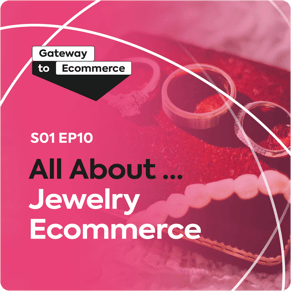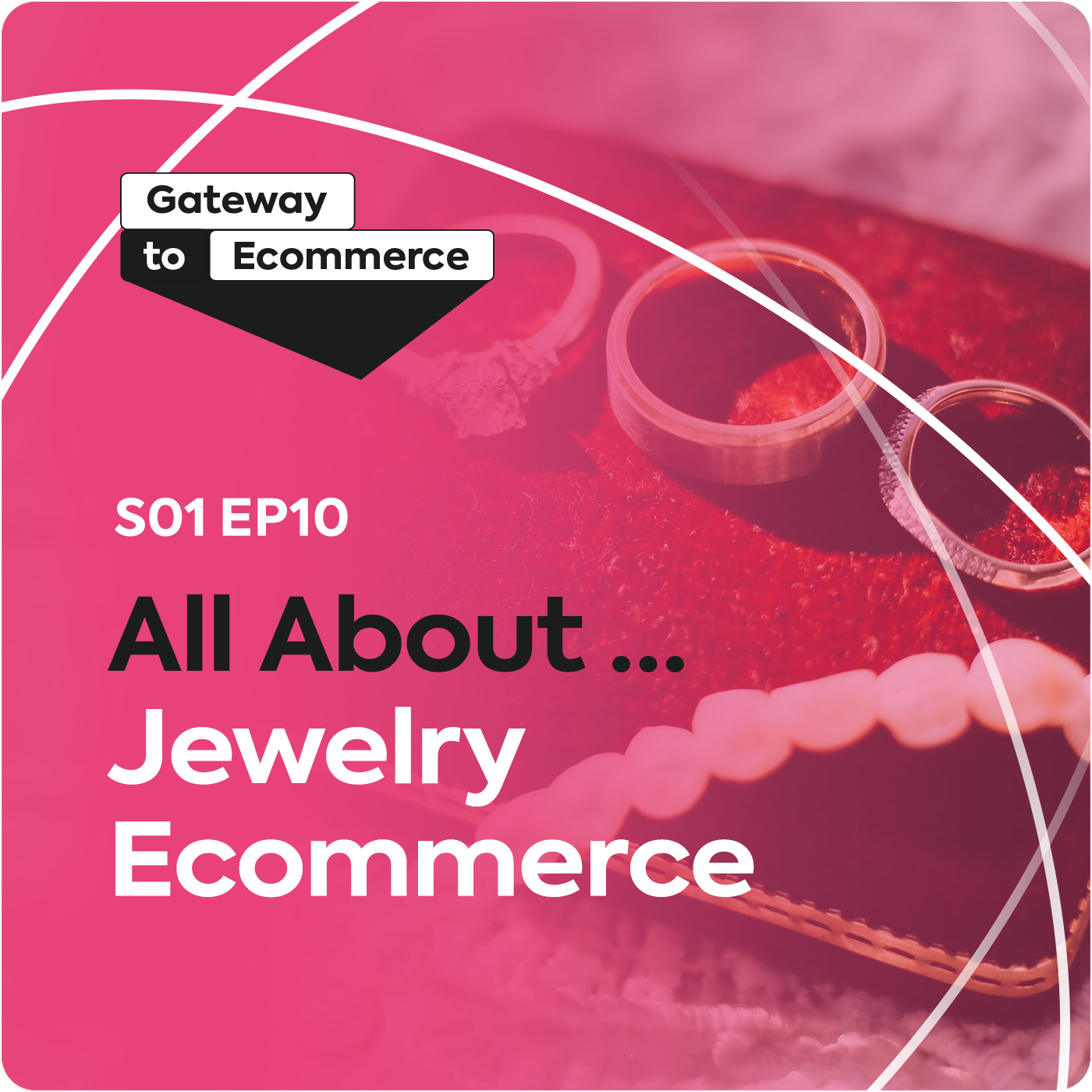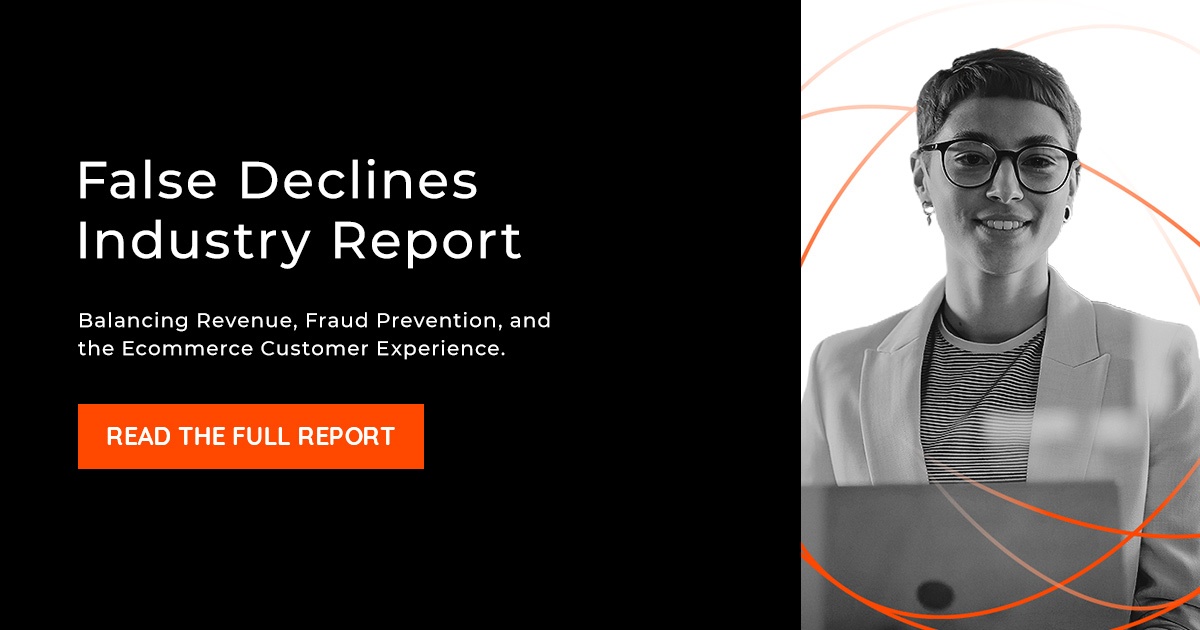episode 10:
All About … Jewelry Ecommerce
Luxury jewelry is undeniably attractive to sellers and buyers alike. It’s coveted by the wealthy, it retains its value over the long term, and its high prices mean retailers need just a few sales to have a great month. But with small, high-priced goods that are easily sellable on the secondary market at close to the original selling price, the risk is high. Jewelry ecommerce merchants have fewer chances than mass merchants to get fraud screening right.
In this episode of Gateway to Ecommerce, Rafael Lourenco, ClearSale’s Executive Vice President, discusses why jewelry ecommerce retailers must be especially wary about fraud, chargebacks and false declines and the steps they can take to protect themselves against lost revenue and a negative customer experience.

Podcast Episode Recap
In our 10th episode, we explore how savvy cybercriminals are looking to breach fraud prevention systems and defraud legitimate customers — and how ecommerce merchants can stop this from happening. But first, let’s introduce you to our host today:
GO TO SHOW NOTES
Who is your host?
-

Rafael Lourenco
is ClearSale’s Executive Vice President. A 12-year veteran at ClearSale, Rafael combines the company’s innovation-driven culture and emphasis on communication with a deep understanding of the statistical tools that underpin excellent fraud protection.
What Unique Risks Do Jewelry Retailers Face?
Luxury customers demand an exceptional customer experience, and high-end jewelry consumers are no different. They want what they want, when they want it — and if retailers can’t deliver, they risk reputational damage as well as the loss of the lifetime value of that customer. But while jewelry retailers continue to enjoy an increase in demand for their products, they’re also seeing an increased risk. Because their products are popular, easy to resell and small in size, they’re more frequently a target for fraudsters. In fact, jewelry retailers are seeing a rise in:
• Fraud due to card-not-present and MOTO transactions
• Fraudulent first-time purchases
• Costly chargebacks
• Increased risk of false declines
How Can Jewelry Retailers Reduce Their Risk and Protect Their Sales?
Smart retailers understand that selling high-end jewelry doesn’t have to be risky, as long as they understand their customers’ buying habits, watch for new fraud schemes, and implement strategies to reduce the risk of fraud and false declines cutting into profits. Here’s how merchants are delivering the customized, seamless experiences that keep customers loyal:
• Secure the purchasing experience
• Use manual reviews to confirm gray-area transactions
• Avoid automatic decisions that increase the risk of false declines
• Implement a third-party fraud prevention solution with expertise in their vertical
Stay tuned for upcoming podcast updates and new episodes.
episode Transcript
Podcast Intro
You’re listening to Gateway to Ecommerce, a podcast by ClearSale. In this series, global ecommerce leaders discuss challenges, best practices, new tech, and secrets to success. And now your host, Rafael.
Hi, and welcome to Gateway to Ecommerce, a podcast by ClearSale. You know what they say, diamonds are a fraudster’s best friend, and that couldn’t be even more true. Now, fraudsters, they target jewelry because they’re small, they have a high retail price, and they’re easy to ship. In this episode, our host, Rafael Lourenco, will talk about how we can understand how to combine expensive products and determined thieves as you face the real test of CNP fraud prevention.
Rafael Lourenco
Hi, everyone. Today, I am very excited to discuss a little bit about the challenges that jewelry retailers face when it comes to fraud prevention. And I want to get us started by saying that we often think about a fraudster as a youngster in their bedroom, trying to buy something for themselves. That’s actually true — some fraud is committed by people like this. But the reality is, the main fraud spikes – when the fraud gets high – we’re usually talking about organized criminals. And what they do is they’re buying this to resell.
So, because jewelry has such a high price, high retail price, you always have the bargain hunters searching for discount deals. Jewelry retailers have fewer chances than mass merchant retailers to get their fraud screening right. What I’m talking about here is that very often you, as a jewelry retailer, you have fewer transactions with a higher value. So, a single transaction may affect your margins and may make all the difference in a given month.
More than that, fraudsters have a special interest in jewelry because of these collections lasting longer. And the biggest problem when it comes to fraud prevention for this industry is the false decline. So, by false declines, I mean transactions that were actually good transactions. We’re talking about good consumers trying to make a purchase and these guys in these transactions are being declined. So, the first loss that comes from that of course, is the sale itself. We were talking about items costing more than $10,000, for instance. So, you don’t want to lose these sales in any given month.
Moreover, this same consumer often returns to the store; therefore, you’re not probably losing only that transaction. But potentially the bad customer experience that came from a false decline also will trigger the loss of the lifetime value of this customer. We know how people that buy jewelry like to do it very often. And again, with the high amounts of money involved in those transactions, losing one transaction is bad. But losing on average two or three transactions per year is even worse.
The other element that comes along with the false declines is the reputation. So, we’re talking about rich people, and we all know how their access to the social network can be brand-damaging sometimes. Like trying to buy something on a website and being declined. Actually, the customer experience in this case is horrible, because usually there is a lot of expectation involved in purchasing a jewel. Therefore, reputational damages are one of the things you should be aware of, because any transaction that is falsely declined may trigger someone to post something on social media. And the last thing you want is the bad word of mouth.
Now, let’s try to discuss a little bit how to avoid those false declines and what should we do to avoid all this damage. So, on one hand, we’re talking about the damage and the risk of fraud happening. And high amounts of fraud, high risk and sometimes even low margins for this industry. On the other hand, we are talking about a very interesting and unique element when it comes to false declines for this particular industry.
So, very often, fraud prevention will have the prerogative of calling the consumers. That usually happens in a very small percentage of the cases, but especially when it comes to a situation where the risk to clients is so damaging, we want to make sure we gave all the chances we could to approve an order. So, let’s say your system flagged an order and you have to make a phone call. Again, you should be aiming to have this as a very small part of your transactions. But still this is something that you should take into consideration as a possibility.
So, I want to highlight two aspects of this phone call or this contact with customers. The first one is that jewelry is very often involved with surprises. So, let’s say you’re calling a house of someone, and eventually you’re talking not to the cardholder but to the significant other. What happens is there is a chance that there will be a gift, so we may not want to make a question for them, whether or not this transaction happened. So, this is a sensitive topic, and even sometimes at ClearSale, we face situations where the gift was not even actually for the, let’s say, the wife or husband. And that’s a very sensitive topic also again. So, we have to take a lot of care on these phone calls.
My second comment about these phone calls is that if we’re talking about rich people and is often the case with jewelry, asking for personal information can be especially tricky. So, they may not want to share some information and your protocols, so your MO should be different. Instead of asking them about, let’s say, a given address and asking them to verbalize this information to you, you may prefer to confirm information, confirm data points instead of just asking them the data point itself. So, we’re talking about, “Sir, have you lived at this address before?” And then you verbalize the address.
The other thing I want to mention here is how hard it can be to make automatically deciding these orders phone call. But automatically declining these orders is not much easier. And why? For multiple reasons. One of the reasons is we’re talking about people that are usually traveling, even having more than one address. And then the standard fraud detection systems may find it a risky behavior. So, we’re talking about someone making a purchase online from an IP in Las Vegas, then the address is actually in New York, and the billing address may be in Los Angeles or something. So, this is not uncommon in the jewelry industry, and you should not take this pattern as risky as it is in other industries. Just because of the profile of the people that are buying.
So, upscale shoppers have these specific behaviors that you should be taking into account, and to make more conscious automated decisions, you’ve got to consider the multiple addresses, the multiple locations, and even the multiple phone numbers and contact information. The other element that I want to bring up here is that the online purchase may be just one of multiple points of contact that these upscale shoppers will have for you with your company. So, when it comes of the order, it’s very common that someone goes to a store, to a brick-and-mortar location. They look at the item, they compare it, they take pictures, they get back home, and then they will eventually reach out to you via phone or even via your website. So, it seems that when usually we are talking about card-not-present fraud prevention, we’re referring to online purchases of ecommerce. When it comes to jewelry, it’s not that uncommon that we are talking about phone orders just because of the situation I just described.
So, I’m traveling, I check out a store, and I check out a given item. And then I go back home, and I just call the store and say I want to make a purchase over the phone. And they will have to take my information over the phone, and we will place the order in their system. And this is subject to chargebacks. When it comes to those type of orders, we’re talking about a one-channel type of relationship with multiple points of contact. And two, some types of orders may not sound like they are risky, but they may be. Again, if we’re talking about a phone order, you are talking about a card-not-present transaction. And therefore, the risk of a fraud, the risk of a chargeback relies on you as a merchant.
So, we discussed already how unique the behavior is of these customers in their purchase journey. We discussed how damaging the chargebacks for this business are. And how hard and challenging it will be for you to prevent this fraud from happening, as well as dealing with your customers properly. The challenges that are involved in the jewelry space are higher than anywhere else. And you should try to find someone who really knows how to handle these challenges.
So, my last recommendation before we wrap up here is to try to understand that the jewelry industry is so unique. That not only when finding a partner, finding a solution provider, you should look for experience on the space, in the ecommerce space; the number of customers and transactions; and the years of experience in the space. But also specifically with jewelry, you’ve got to take care of your customers as much as anyone else. And you should then look for people in companies and partners with experience in this particular field.
So, with that said, ClearSale has a lot of resources related to fraud prevention. And in particular with goods and jewelry. So, stay tuned with the Gateway to Ecommerce podcast. Thank you so much.
Podcast Outro
Thanks for listening to the Gateway to Ecommerce podcast by ClearSale. Rafael gave us a lot of things to think about when it comes to selling jewelry in the ecommerce space. If you’d like to know more about this topic and many others, make sure you visit us on our website at clear.sale.
Now, if you liked this podcast and if you liked what you heard, make sure that you subscribe, like and share our podcast on all major platforms. You can also find us on all major social media platforms. So, make sure you share your feedback and give us comments; we’d love to hear from you. Once again, thanks for listening to the Gateway to ecommerce podcasts, and we’ll see you soon.
For more ecommerce insights, visit us on our website at clear.sale.








![[webinar] Route & Midigator](https://no-cache.hubspot.com/cta/default/2530812/85a38412-9a58-4304-ab50-50dc69542fb7.png)




